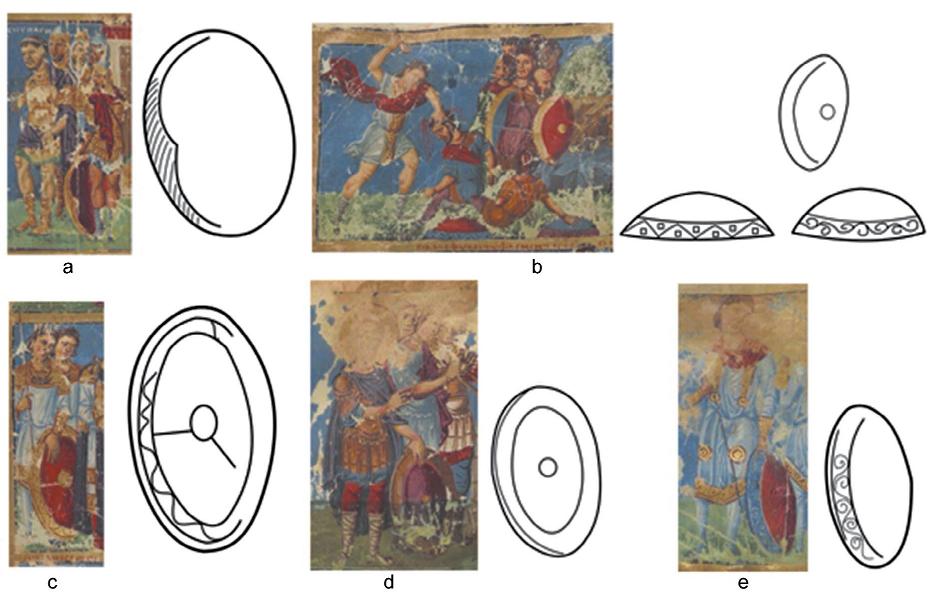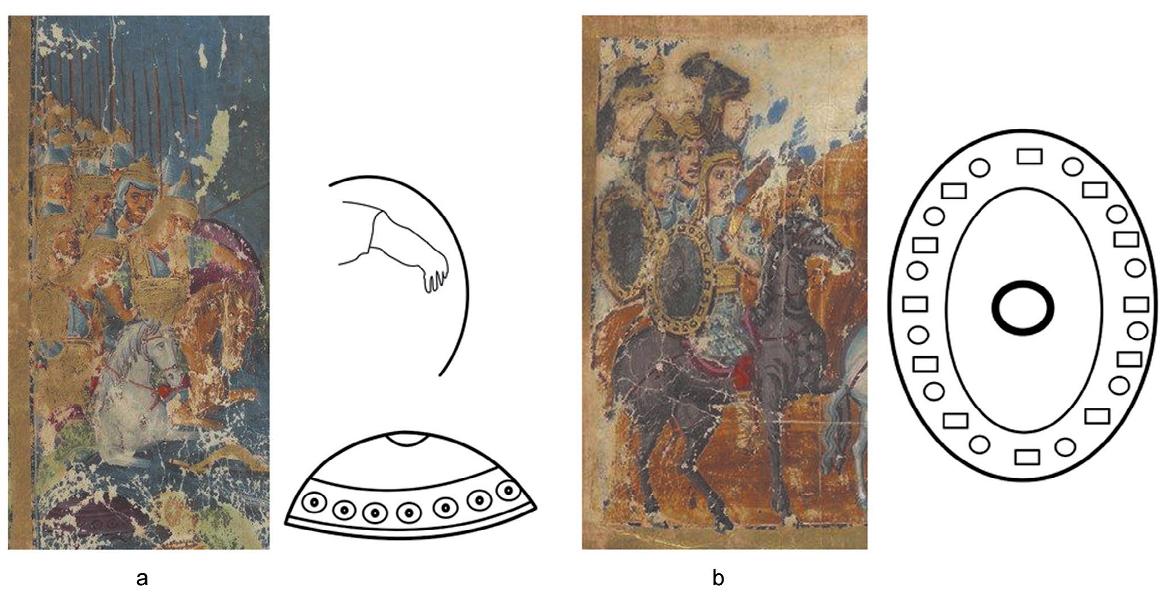
Create an Amazon Business Account
An extract from
Valeri Yotov Byzantine Weaponry and Military Equipment in the Homilies of St Gregory of Nazianzus (Paris, Gr. 510)
Translated by Alexander Minchev
 Fig. 1. Homilies Paris, Gr. 510: a – healing of the centurion’s servant (170r); b – scene from the life of Samson (347v); c – scene from the life of Julian the Apostate (374v); d – fall of Jericho (424v); e – scene of the lives of Constantine and Helena (440r). |
 Fig. 2. Homilies Paris, Gr. 510: a – crossing of the Red Sea (264v); b – scene from the life of Julian the Apostate (409v). |


